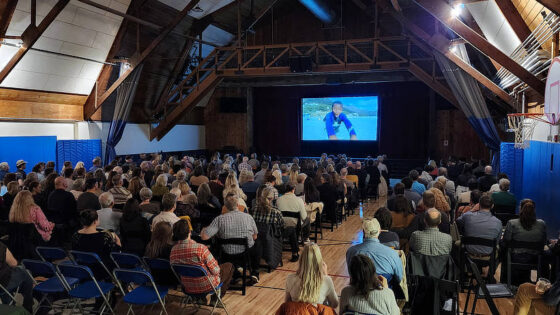Streamside Forest Project Enhances Fresh Water and Wildlife, Inspiring Sustainable Initiatives for a Cleaner Chesapeake Bay

With 140 acres of walking trails, athletic fields, playgrounds, a library and pool, and even a restaurant, Overlook Community Campus in Lancaster County, Pennsylvania, is a large and popular public space. The park is also home to a pilot project that’s transforming eight of its acres into a highly visible demonstration site for how streamside forests can support wildlife and reduce water pollution.
Dog walkers, bicyclists, and every other kind of passerby on the adjacent path can see young trees peeking out of green tubes and an attractive pollinator garden filled with wildflowers. Many have stopped to ask questions, according to volunteers who maintain the site. What the volunteers and some educational signage tell them is that it’s not only a space for nature to thrive but also for protecting clean water in their community and all the way down to the Chesapeake Bay.
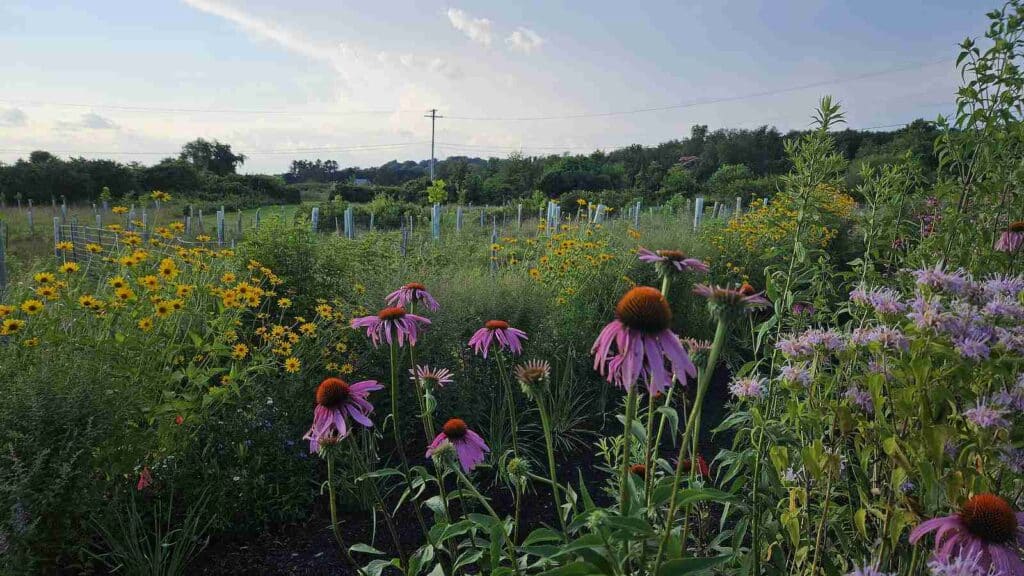
Reducing water pollution in freshwater streams is a high priority and a challenge for Lancaster County. The agricultural hub has more miles of polluted streams than any other county in the state, according to the Pa. Department of Environmental Protection. It also contributes 21% of Pennsylvania’s nitrogen load to the Chesapeake Bay, a stark number in a state that has fallen behind others in meeting a looming 2025 cleanup goal under the Chesapeake Bay Agreement.
Ashley Spotts, a restoration biologist for the Chesapeake Bay Foundation, says, “Public spaces should be the example of good land use whether it’s on a farm, a private residence, or a business. Every stream in every park in Lancaster County should have a buffer.”
Spotts represents one of Stroud Water Research Center’s partners on the project at Overlook. Conservation professionals like her refer to the trees planted along waterways as riparian buffers for their ability to reduce the amount of fertilizer and other sources of pollution that wash off the land and into streams during storms.
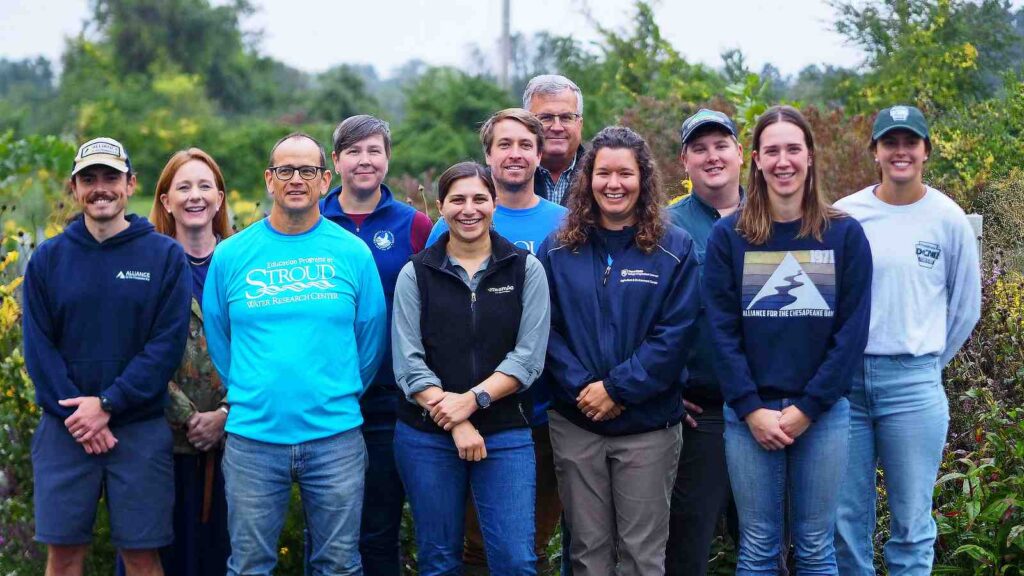
The impact trees can have on water quality is significant. Stroud Center scientists have found that a 100-foot-wide buffer on each side of a stream can reduce nitrogen running off the landscape and into a stream by 26%, sediment by 50%, and pesticides by 60%.
Understanding that trees are critical to protecting clean water, Lancaster County has made streamside forests part of its pollution reduction strategy. Its Countywide Action Plan calls for the planting of 6,000 trees by 2025. Currently, only 11% of the land in Lancaster County is forested.
Lamonte Garber, the Stroud Center’s watershed restoration coordinator, says the Overlook project will help the county reach its goal and serve as proof of concept for other townships that might consider adding buffers to public spaces. Lancaster County has 60 townships, each with its own local park system. Garber is working with some of them, and with local governments in other counties, to grow or start buffer programs.
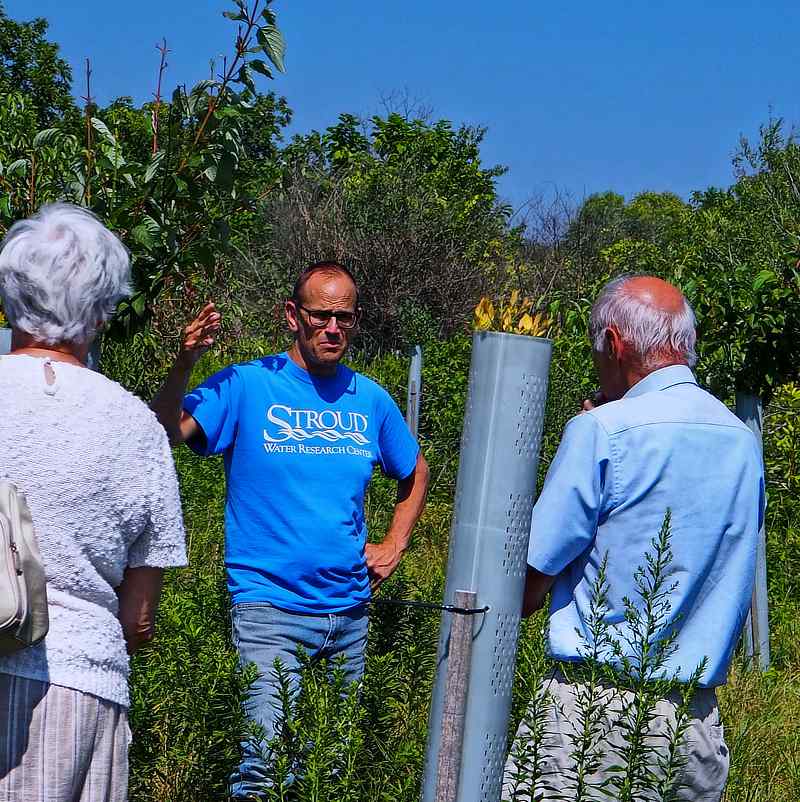
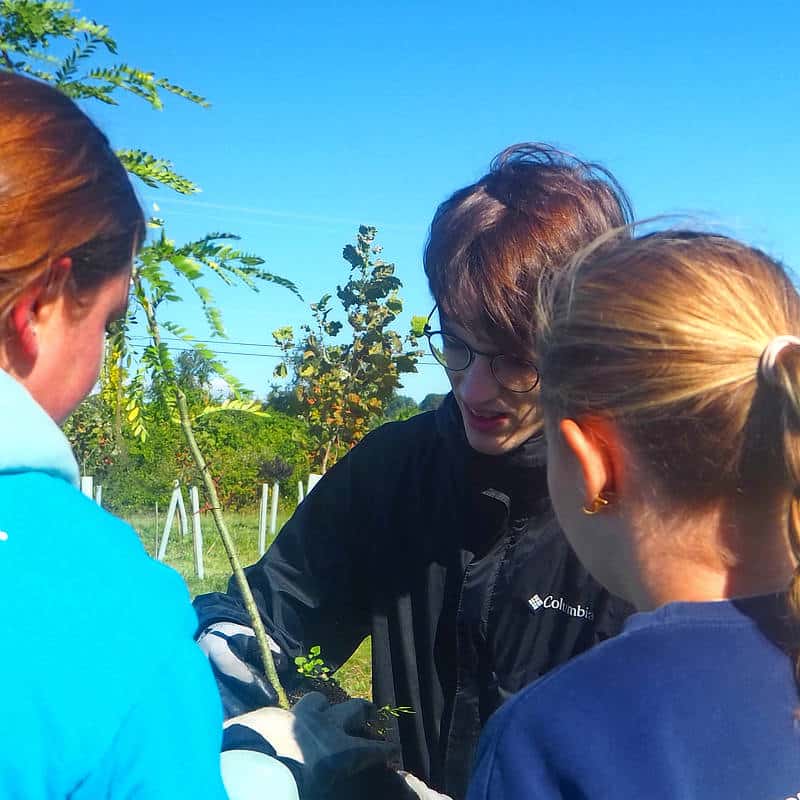
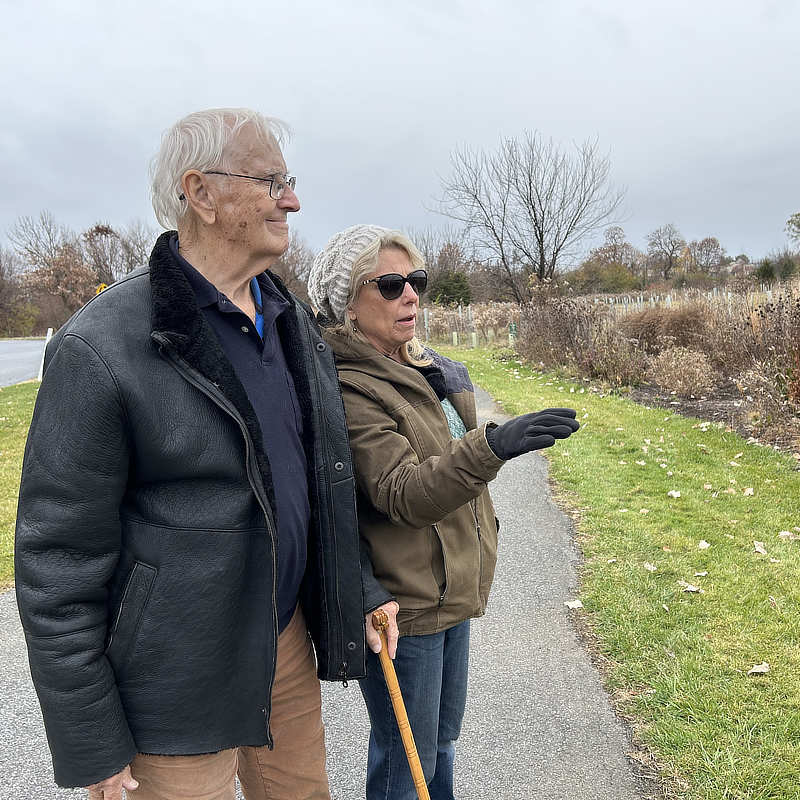

The fact that Manheim Township could turn over an area of Overlook crawling with poison ivy to the care of others was a plus. In turn, it has donated maintenance support, mulch, and topsoil toward the project.
Bill Sauers, the township’s director of public works, says, “It’s an excellent project for the township to participate in. Our lift was pretty light, and it’s going to be a dramatic change that people probably won’t fully appreciate until years from now as it grows.”
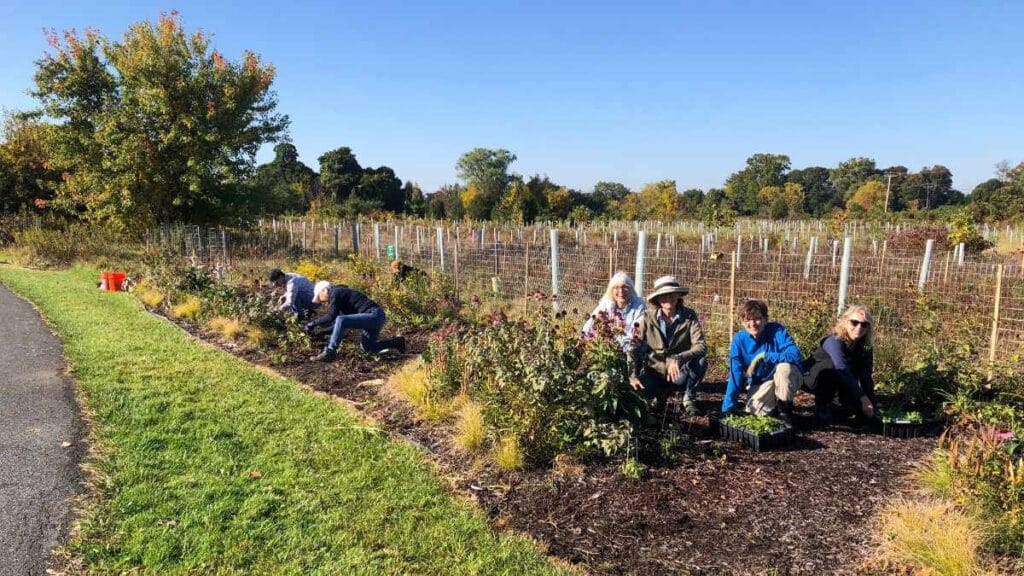
Ryan Davis, senior forest projects manager for the Alliance for the Chesapeake Bay, led nonprofit partners and volunteers in planting the first three of eight acres with about 600 trees in the spring of 2021. The Stroud Center and partners, led by Garber, planted the rest of the site the following year, with funding from Pennsylvania’s Department of Conservation and Natural Resources.
Today, the buffer has about 2,000 trees, all native species, such as silver maple, American sycamore, and pin oak. Still young and susceptible to deer and rodent damage, the trees are protected by green tubular shelters, a best practice that the Stroud Center was the first to study and launch in the United States along reforested streams.
Art in the Park
The streamside forest and pollinator garden at Overlook have played muse to local artists — thanks to events organized by Ashley Spotts of the Chesapeake Bay Foundation, and Matt Allyn Chapman and Nicole Duquette, who own an art gallery. Called Made in the Shade Plein Air Art Making, the events brought artists outside across three seasons to see the forest and garden grow and change. Photos: Ashley Spotts and Matt Allyn Chapman
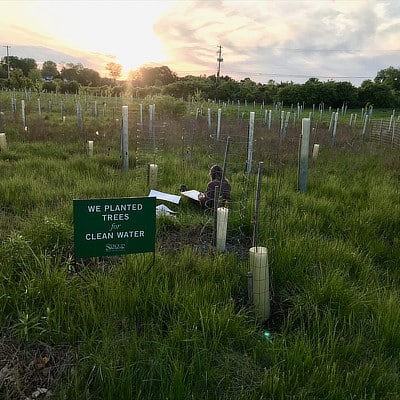
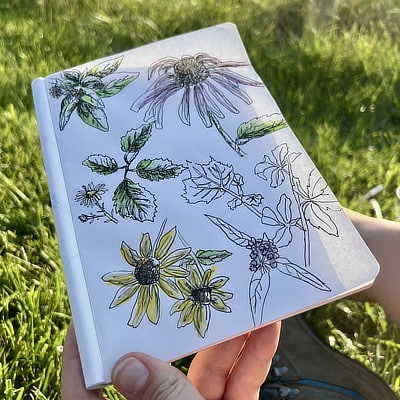
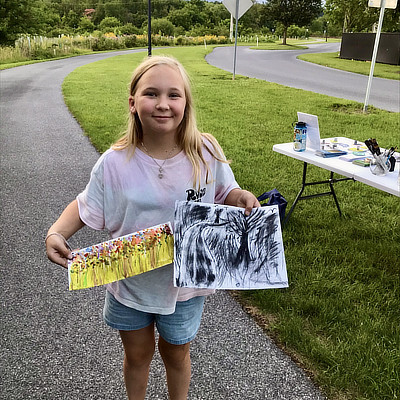
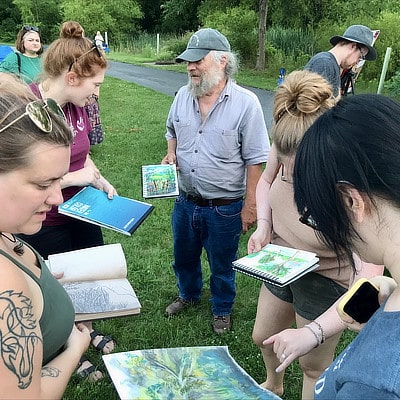
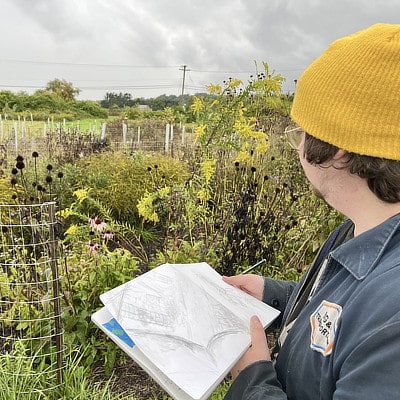
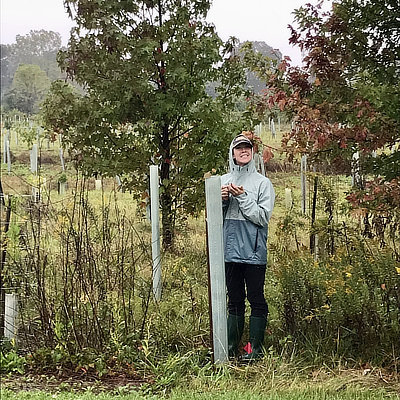
There are also many shrubs, including cranberrybush and black chokeberry, and in front of the forest is a garden filled with nodding onion, purple coneflower, wild bergamot, and other wildflowers to attract bees and butterflies.
Volunteers led by the Stroud Center and its partners brought the forest and garden to life. Just a few years after the first planting, the beauty of the space has attracted attention.
Brenda Kauffman, one of the volunteers and a resident of Manheim Township, says she sees many people at the park walking with friends and family while she is weeding or inspecting the buffer on weekends. “They frequently ask questions, and they comment about how pretty it is,” she says. “The project makes me feel proud. It makes me feel good, and I think other people feel good when they see it.”
Learn More
To partner with the Stroud Center and get help caring for your land and local stream, please contact us. Email buffers@stroudcenter.org to discuss your project.
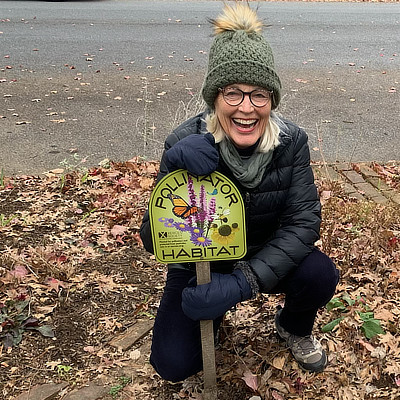
“I pulled out all the English ivy and daylilies — although pulling out my irises was bittersweet — and I’ve now planted all natives. I added signage so neighbors discover the benefits of a pollinator garden.” — Brenda Kaufman
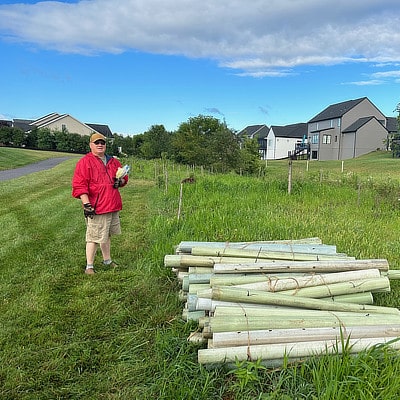
“In my retirement community, I had about 20 people come out and help, and in about two hours, we had live-staked probably 200 different species. The plants are growing, and it already looks nicer than it used to.” — Wes Neumann
Ripple Effect: Taking Your (Volunteer) Work Home
The Overlook project inspired volunteers Brenda Kaufman and Wes and Linda Neumann to transform the spaces where they live.
That is the kind of impact Allyson Gibson, executive director of the Lancaster Clean Water Partners, says the project partners were hoping for. She says that’s especially true in public spaces, where manicured lawn is the dominant green space: “It’s a shift in mindset that the look of a streamside planting is okay. It normalizes the look of a forest or meadow.”
And that may be one of the biggest hurdles the project has overcome, says Garber: “When public spaces like Overlook bring back native trees and flowers around a stream, visitors discover what makes their local environment special and capable of supporting clean water and wildlife. They see how beautiful and ecologically rich a property can be compared to a traditional lawn, and it invites them to do something similar in their own spaces.”
A Natural Area to Explore
Learn more about the Overlook Park Streamside Forest and Pollinator Garden.
Thinking About Planting Native Trees?
To learn how to do it successfully, check out the Stroud Center’s collection of fact sheets, videos, and other resources.
Bring Nature to Your Home
Learn how you can participate in Homegrown National Park, a bottom-up call to action to restore the habitats where we live and work.



